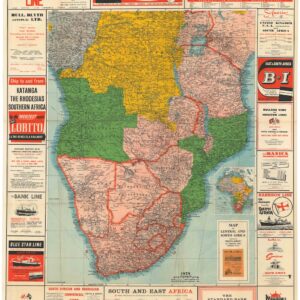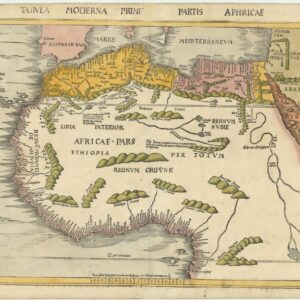Robert Dodd’s dramatic aquatint of Nelson’s Battle of the Nile.
Battle of the Nile, at 10 O’clock at Night, To the Right honorable Admiral Lord Nelson of the Nile…
$1,400
1 in stock
Description
A vivid reminder of the crucial role played by the Royal Navy in maintaining British hegemony across the globe.
This dramatic aquatint is one of four prints executed by the famous English maritime artist Robert Dodd commemorating the iconic naval Battle of the Nile. The prints were published in the final year of the 18th century, only a year after the event they depicted had occurred. The aquatints were based on a series of oil paintings by Dodd. They were the most common way to share the visual documentation of a decisive battle in British naval history and, perhaps more importantly, the first indication that Britain was a force to withstand the French revolutionary General Napoleon Bonaparte.
The Battle of the Nile – also known as the Battle of Aboukir Bay – was a major naval confrontation between the British Royal Navy and the Navy of the French Republic. It lasted two full days and nights, spanning from the 1st until the 3rd of August 1798, and constituted the culmination of a three-month campaign by French forces in the Mediterranean. While Vice-Admiral François-Paul Brueys d’Aigalliers commanded the French fleet, the British were under the command of Rear-Admiral Sir Horatio Nelson. The battle was a decisive triumph for the British. It cemented British naval power on the high seas, decimated the French Navy, and stranded Napoleon’s army in Egypt.
Neatline’s example depicts the battle as it rages off the Aboukir promontory, just east of Alexandria. Because the battle was immediately understood as an iconic confrontation, Dodd opted to depict various scenes representing various times during the battle. When he published his set of four aquatints in 1799, each represented a specific point in the conflict. In our case, the print title informs us that we are witnessing the state of affairs at 10 o’clock on the first night of the battle.
The image essentially depicts the advancing British line as seen from behind. The French flagship, l’Orient, has engaged the line in a great confrontation with the HMS Bellerophon. While the British ship is seen adrift in the far left of the image, incapacitating it had come at a high cost to the French. Even though she is hardly visible in Dodd’s elegant composition, the fires raging on l’Orient illuminate the image. The confrontation between the Bellerophon and the Orient was devastating for both. While the collision had killed or incapacitated virtually all British officers, the Orient had been set ablaze, eventually causing its munitions to explode. The blast killed not only the entire crew but also the French fleet’s commanding officer, Vice-Admiral François-Paul Brueys d’Aigalliers, and would ultimately signal French defeat.The fate of the Bellerophon was among the heroic stories to emerge after the battle, with tales of a young midshipman risking his life to move the ship away from the melee. The drama is captured in her broken mast and the remaining seamen scrambling to get off the ship.
In the far right of the image is half of another identifiable vessel with a slightly less spectacular story. Despite being a sturdy ship-of-the-line with a battle-hardened crew, the HMS Culloden ran aground on the shoals off the Egyptian coast in the initial race to engage the enemy. Consequently, she would be the only British ship that did not actually engage the enemy on that fateful night. In Dodd’s rendition, two lifeboats have been lowered with men inspecting the damage and dropping anchor, presumably to stabilize the ship and prevent the bough from succumbing to the pressure of the surf. Sir Thomas Troubridge captained the Culloden, and it may well be him depicted in the lifeboat on the left.
Context is Everything
Before this battle, a weeks-long game of cat and mouse had played out in the Mediterranean. Napoleon had gathered a sizeable French fleet in Toulon and sent it east, where it captured Malta and installed a French administration in Valetta. Nelson was sent to stop the fleet but missed them in France and was forced to chase. Both Napoleon and Nelson knew that control of Egypt was crucial to ensure mercantile connectivity with India and the Far East, so Nelson hastened to Alexandria, only to find its port empty. It was not until his second run on Egypt that the French fleet was spotted off Aboukir, anchored in a solid defensive position.
Regardless of the disadvantage, Nelson ordered his fleet to engage the French head-on. In a genius move, Nelson released several of his ships from the line, allowing them to maneuver around the French flanks and engage in close-range combat. The most decisive moment nevertheless came when the French flagship, l’Orient, exploded, killing its crew and the French fleet’s commanding officer.
In addition to the glory of humiliating the French Navy, the outcome severely impacted the French position. Up to 8000 sailors and officers were lost, and the destruction of the French fleet stranded most of Napoleon’s army in Egypt for some time.
Cartographer(s):
Robert Dodd (1748–1815) was a British marine painter and engraver best known for his works on the French Revolutionary Wars and the American War of Independence. He was the author of numerous maritime battle and landscape scenes. Due to his popularity, many of his paintings were posthumously reproduced as etchings, but Dodd also engraved and published more than a hundred aquatints himself.
Condition Description
Aquatint on 19th-century wove paper. Minor toning and spotting. Edges worn, reinforced with tape. Some tears into image on left side, most repaired with tape. Small amount of loss in lower left and lower right corners, well away from image and text.
References
![[South Africa] Photograph panorama of Cape Town, c. 1870](https://neatlinemaps.com/wp-content/uploads/2022/09/Screen-Shot-2022-12-18-at-11.22.15-AM-300x300.png)
![[Title in Russian] Russian Empire in the 18th Century (European Section)](https://neatlinemaps.com/wp-content/uploads/2020/04/NL-00822_Thumbnail-300x300.jpg)
![[Title in Russian] Russian Empire in the 18th Century (European Section)](https://neatlinemaps.com/wp-content/uploads/2020/04/NL-00822-scaled.jpg)
![[Title in Russian] Russian Empire in the 18th Century (European Section)](https://neatlinemaps.com/wp-content/uploads/2020/04/NL-00822-scaled-300x300.jpg)

